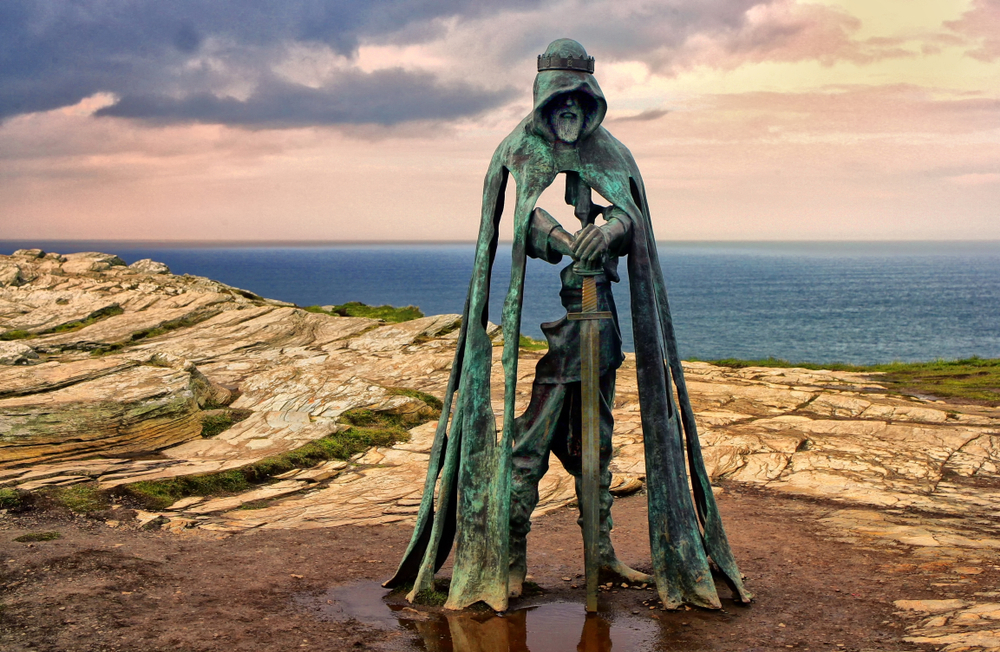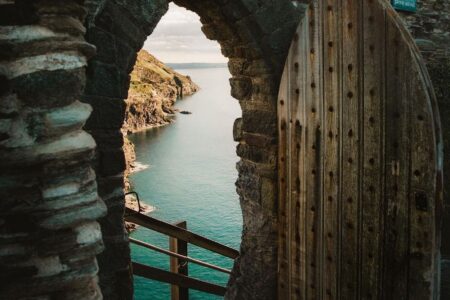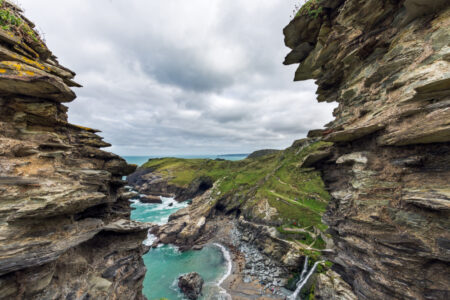One of Cornwall’s most unmistakable heritage sites, Tintagel is a castle built partly on the mainland and connected to an island jutting out over the Atlantic coast. Tintagel is easily north Cornwall’s most iconic structure and, thanks to its connection with King Arthur, one of the most romantic. But how far do these claims stand up?
Location
The clifftop has been inhabited since Roman times, and remained a flourishing community in the 5th century AD with the foundations of houses from this era still visible. The remains of Mediterranean pottery discovered here have led archeologists to believe that it was a trading hub and residence for the rulers of Cornwall for more than 200 years.
The Castle
The King Arthur claims came much later, in the 12th century, when writer Geoffrey of Monmouth named it in his History of the Kings of Britain as the place where the legendary British ruler was conceived with the help of Merlin. The castle that now stands on the site, and which feels so Arthurian, was actually constructed in the 13th century by Richard, Earl of Cornwall, brother of King Henry III. It seems likely that he was attracted to Tintagel for much the same reasons we are – its legendary connections and dramatic location.
Merlin’s Cave
For the adventurous visitor, it’s well worth making the climb to Haven beach below. Accessed from the castle by a stepped hill, you’ll find a quiet spot, excellent for rock pooling and seal spotting. A waterfall even tumbles over the rocks from the cliffs above. If you visit at low tide, you’ll also be able to discover Merlin’s cave. Believed to have been the home of the wizard, this 300 foot tunnel runs underneath the castle and island, leading you right out the other side.
Statue of Arthur
A magnificent eight foot tall bronze sculpture, inspired by the legend of King Arthur now keeps watch on the cliffs. This brooding, wraith-like figure, named Gallos (meaning ‘power’ in Cornish) is the work of Welsh sculptor Rubin Eynon. English Heritage, who have been criticised by local historians for exploiting the Arthurian connections of this important site, are at pains to point out that Gallos is not specifically meant to depict Arthur, but rather represent Tintagel’s royal heritage.

King Arthur’s Halls
If you’re happy to embrace the legend rather than historical fact, then a visit to King Arthur’s Halls in town is a must. This curious 20th century granite building was purpose built as an Arthurian theme house, honouring the king, whose legend you’ll see in an impressive array of stained glass windows. There’s even a round table and big throne to pose in!
St Nectan’s Glen
After you’ve made the pilgrimage to Tintagel, why not continue your quest for mediaeval mystery by visiting St Nectan’s Glen. It’s said that the hermit St Nectan threw a silver bell into the waterfall and declared that it would not ring again until ‘true faith’ was restored in England. This magical Arthurian landscape also includes a tiny hermitage, an arbour and mysterious rock carvings in the Bronze age labyrinth. Just a few miles from Tintagel it’s also much quieter, so you’ll be able to listen out for Nectan’s bell.


